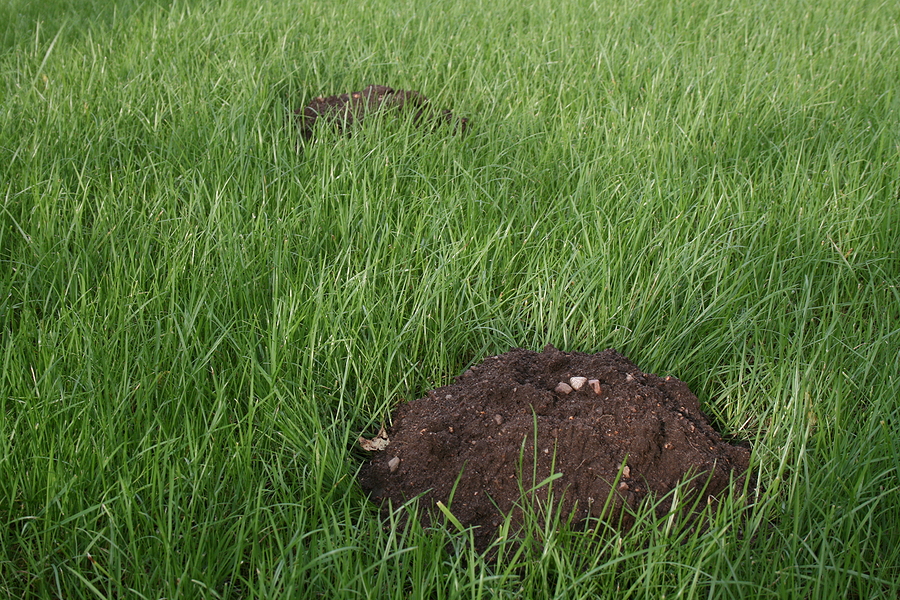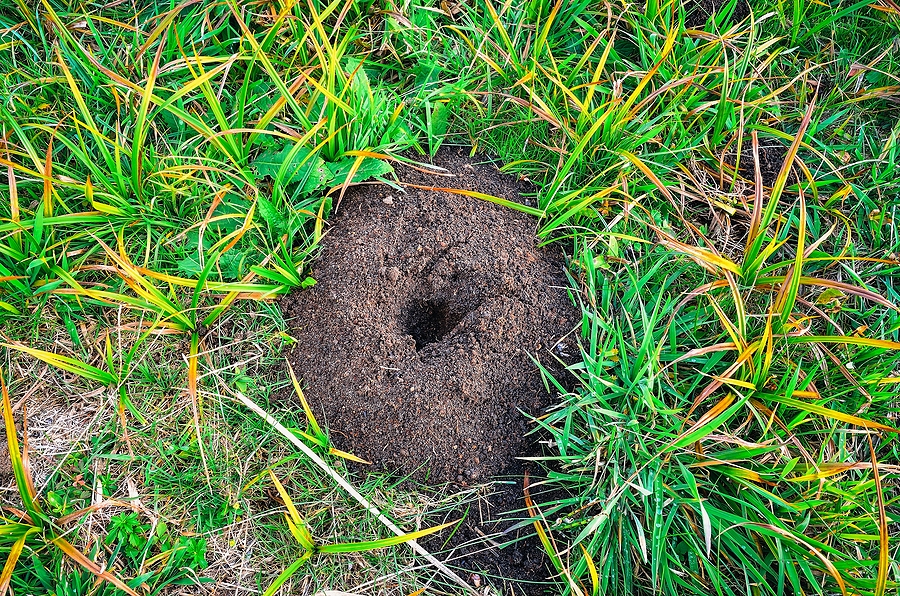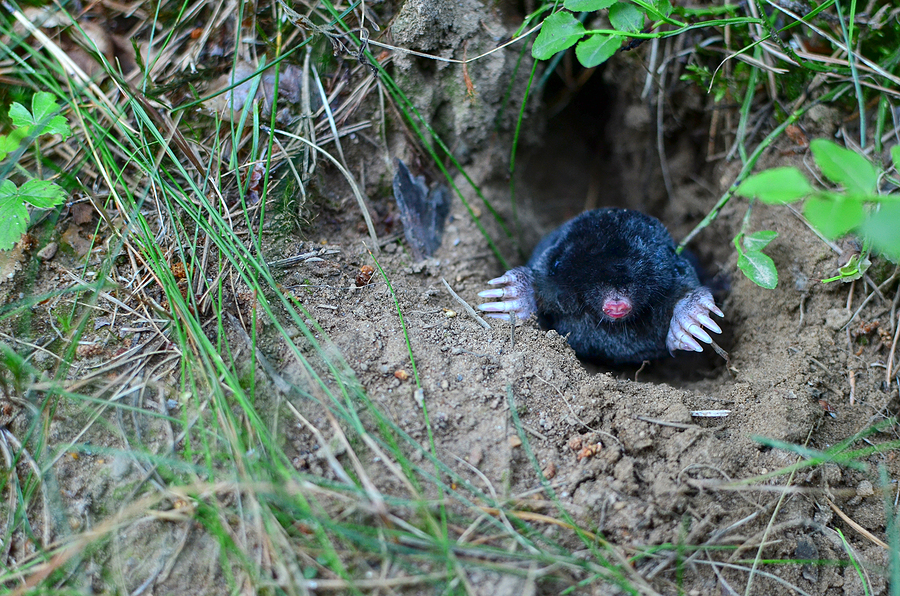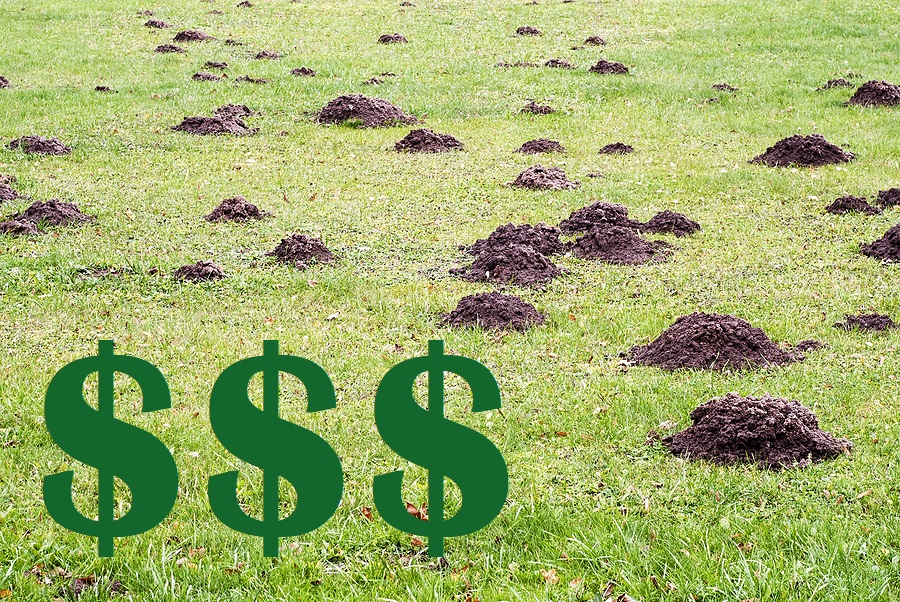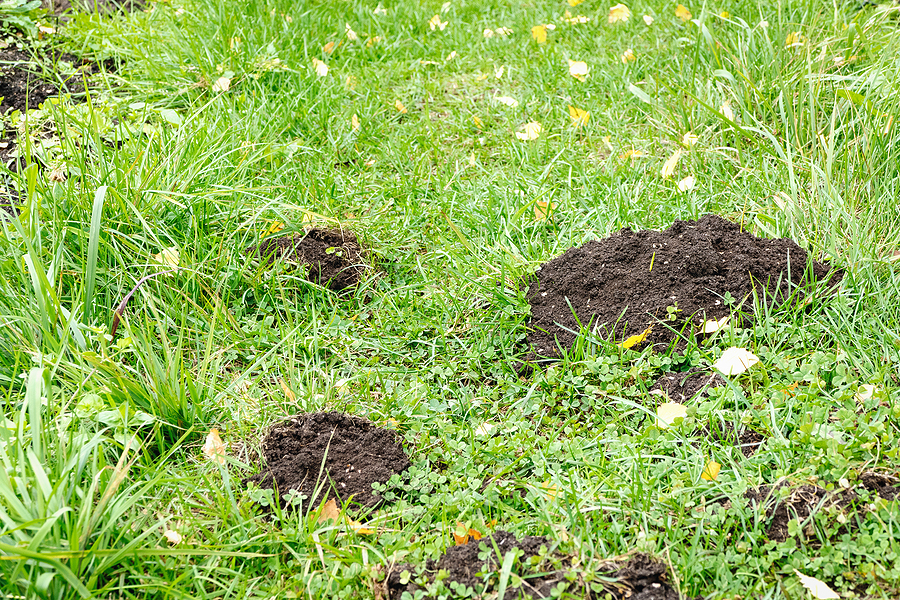Imagine waking up to see your beautifully manicured lawn riddled with unsightly tunnels and mounds. The frustration and disappointment are palpable as you realize your hard work is being undone by these small, yet destructive creatures. You’re not alone—moles wreak havoc in yards across the country, turning pristine gardens into messes within days. Addressing mole infestations early is crucial to maintaining a healthy, picturesque yard.
This blog post will teach you how to detect mole presence by identifying common signs such as raised ridges and molehills, prevent infestations through effective lawn care practices, and treat existing problems using humane and environmentally friendly methods. Taking prompt action can save your yard from extensive damage and restore its original beauty.

The Deal With Yard Moles
Moles are small, burrowing mammals. The most common types found in North American yards are the Eastern mole, Star-nosed mole, and Hairy-tailed mole. Each has unique characteristics, but all share a love for tunneling through your garden.
Mole Habitat
Moles prefer moist, loamy soil rich in insects and grubs, which constitute their primary diet. They create intricate tunnel systems close to the surface for feeding and deeper burrows for nesting. Understanding their behavior and preferences is key to effective mole control.
Signs of Mole Activity
Recognizing mole activity early can save your garden from extensive damage. Look for raised ridges, mounds of soil (molehills), and damaged plant roots. These signs indicate that moles have taken up residence beneath your lawn.
Lawn and Garden Damage
Once you detect mole activity, assess the extent of the damage. Check for irregularities in the lawn surface and uprooted plants. While moles primarily feed on insects, their tunneling can disrupt root systems and affect plant health.
Preventing Mole Infestations
Landscaping and Garden Maintenance Tips
Prevention is always better than cure. Regular lawn maintenance, such as aerating the soil and removing excess thatch, can discourage moles. Ensure proper drainage to prevent the soil from becoming too moist, which attracts moles.
Mole-Repellent Plants and Barriers
Certain plants can deter moles due to their strong scents. Planting daffodils, marigolds, and castor beans around the perimeter can act as natural mole repellents. Additionally, creating physical barriers by installing hardware cloth or metal mesh underground can prevent moles from entering specific areas.
Treating Mole Infestations
Non-Lethal Methods
If moles have already invaded, non-lethal traps can be an effective solution. Live traps capture moles without harming them, allowing for relocation. Ultrasonic deterrents emit sounds that drive moles away, while castor oil-based repellents make the soil unpleasant for them.
Professional Pest Control Options
For severe infestations, seeking professional yard mole removal and control services is advisable. Experts can assess the situation and implement targeted strategies. Professional treatments often include baiting, fumigation, or tailored exclusion methods to eliminate moles efficiently.
Long-Term Mole Control Tips
Sustainable Practices to Keep Moles at Bay
Maintaining a mole-free yard requires consistent effort. Regularly inspect your garden for early signs of mole activity. Implementing sustainable practices such as crop rotation, soil conditioning, and encouraging natural predators like owls can help keep moles at bay.
Common Mistakes to Avoid in Mole Control
Avoid using harmful chemicals or over-watering your lawn, as these can inadvertently attract moles. Over-relying on DIY methods without understanding mole behavior may lead to ineffective results. Educate yourself and apply comprehensive, humane strategies for sustainable mole control.
Conclusion
Mole control involves early detection, prevention, and effective treatment. By understanding mole behavior, implementing preventive measures, and seeking professional help when necessary, homeowners and gardening enthusiasts can protect their yards from these burrowing pests. Take proactive steps today to ensure your lawn remains healthy and beautiful. For more information and professional assistance, contact our trusted pest control experts.
By following these tips, you can enjoy a mole-free garden and contribute to its beauty and health. Don’t wait until the problem escalates—act now and keep your yard in pristine condition!
Are you relentlessly dealing with ground moles and have reached your breaking point? If so, you are in the right place. Contact Mole Miners at 629-277-0933 for TWRA licensed and insured yard mole removal in Nashville, Tennessee. We serve all greater Nashville areas, including Brentwood, Clarksville, Hendersonville, Smyrna, Nolensville, Murfreesboro, Gallatin, Lebanon, Mt. Juliet, Kingston Springs, Ashland City, Pleasant View, and all nearby towns!
Related Posts:
Ground Moles and Disease: What You Need to Know
Go Underground: A Comprehensive Guide to Mole Trapping
Guard Your Garden: Tips for Using Animal Mole Repellents




